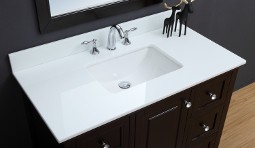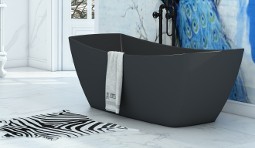
Is there anything worse than a bathroom covered in mould and mildew? Unfortunately, this is an all too common scenario for many interior and exterior washrooms. So how does one prevent such unsightly and unattractive staining of tiles, floors and fittings? The solution for many bathrooms is correct and suitable waterproofing. Ensuring the wet space is waterproof is the first step to creating an area that will resist mould, mildew and other damp-related issues.
So what is waterproofing, and how does one retrofit a space with the requisite essentials?
Waterproofing is a moisture-proof barrier around walls, floors and fittings in your bathroom that protects the internal skeleton of the house. A house's structure is often built to withstand many different environmental conditions, but water can unfortunately damage it and for this reason you need to safeguard against any moisture leakage. New homes, if built well, will often be completely waterproof, but older ones can suffer immensely if not treated. Of all the rooms, the bathroom requires the highest level of water protection. Any leakage is problematic, so let’s talk about some essential tips and tricks for waterproofing your bathroom.
Why is my bathroom leaking?
First things first, you need to understand why your bathroom is leaking. A leaky bathroom can be caused by several different factors:
• A tear in the waterproof lining of the room
• Old fittings and fixtures
• Faulty pipes and plumbing
• Damaged flooring
• Damaged wall tiling
• Silicone that has started to wear away
Once you have determined the cause of your leak, you will probably want to speak to a professional to get an expert opinion on how to fix the issue.
Signs and symptoms of a leak
Keep an eye out for the following:
Mould and mildew
Mould is one of the most common issues as an indicator of water leakage. Of course, mould and mildew are a normal occurrence, and will grow in a bathroom if it isn't cleaned regularly or properly, so you should look out for persistent mould that is impossible to remove. Leaking pipes are a common cause of water leakage and will allow mildew or mould to spring up in highly inconvenient spaces.
Damaged paint or wallpaper
Blisters in paint or wallpaper can be a clear sign that you have a water leakage issue in your bathroom. Wallpaper adhesive comes loose if affected by water, and should be assessed before fixing. Additionally, consider adding a ventilation fan to dry the area and help moisture dissipate.
Damaged walls
Walls that are affected by water leakage often look warped or stained. Look at a possible water leak in the membrane between the plaster and the internal structure.
Damaged floors
Watertight floors can withstand a fair amount of liquid before they become damaged. If your tiling is cracking, stained, or your timber is buckling, you could have a water issue.
Ceiling stains
Ceiling stains are a give-away when looking for water leakage. Many of us will have experienced water leaking into the ceiling of other areas of the home after a storm, or heavy rain. Within the bathroom, the same principle applies, if you see stained or dark patches appearing you should seek professional assistance.
Dank and damp odours
One of the most common ways to determine if your bathroom is leaking is to simply smell it. Do you smell any notes of dampness, or dank odours?
Waterproofing the floor
Before you undertake any waterproofing of your house, you should get familiar with local regulations and laws. In each country has codes and standards that stipulate who can actually waterproof a home.
If you do proceed, you will want to look at any cracks in the floor and ensure the area you are waterproofing is treated with the necessary chemicals to remove any mould or growths that may have occurred. Contact a professional to get advice on waterproofing and re-tiling your floor, as this is often beyond the average DIYer.
Waterproofing tiles
The membrane between the walls and the plaster within a bathroom is particularly essential to its integrity and worth. Before re-tiling a space in your washroom, you should ensure that walls and ceiling are completely sealed. Only then should you consider re-tiling your space.
If you only have a small water leak such like a crack in a tile, the best way is to remove the tile and re-seal it with a new one.
Improving bathroom air quality
Next up, you should look at improving the air quality in your bathroom. This can be done through the use of ventilation and exhaust fans. Fans draw the moisture from the air, and keep your walls, floors, and other surfaces free from damp.
Also, consider leaving a window open, and use plants to soak up moisture and keep your room dryer with improved the air quality.
Removing mould and mildew
Removing mould and mildew can often be a tiresome and tedious task. However, once you have waterproofed your bathroom, you are going to make good on any damage to the internal space.
Mould and mildew can be easily and safely removed from any surface, with a simple solution of baking soda and vinegar. The quantities may need to be adjusted based on the level of mould you are attempting to remove, and this sometimes requires a little trial and error.
Source: https://www.homify.sg/ideabooks/585523/handy-tips-to-waterproof-your-bathroom


































